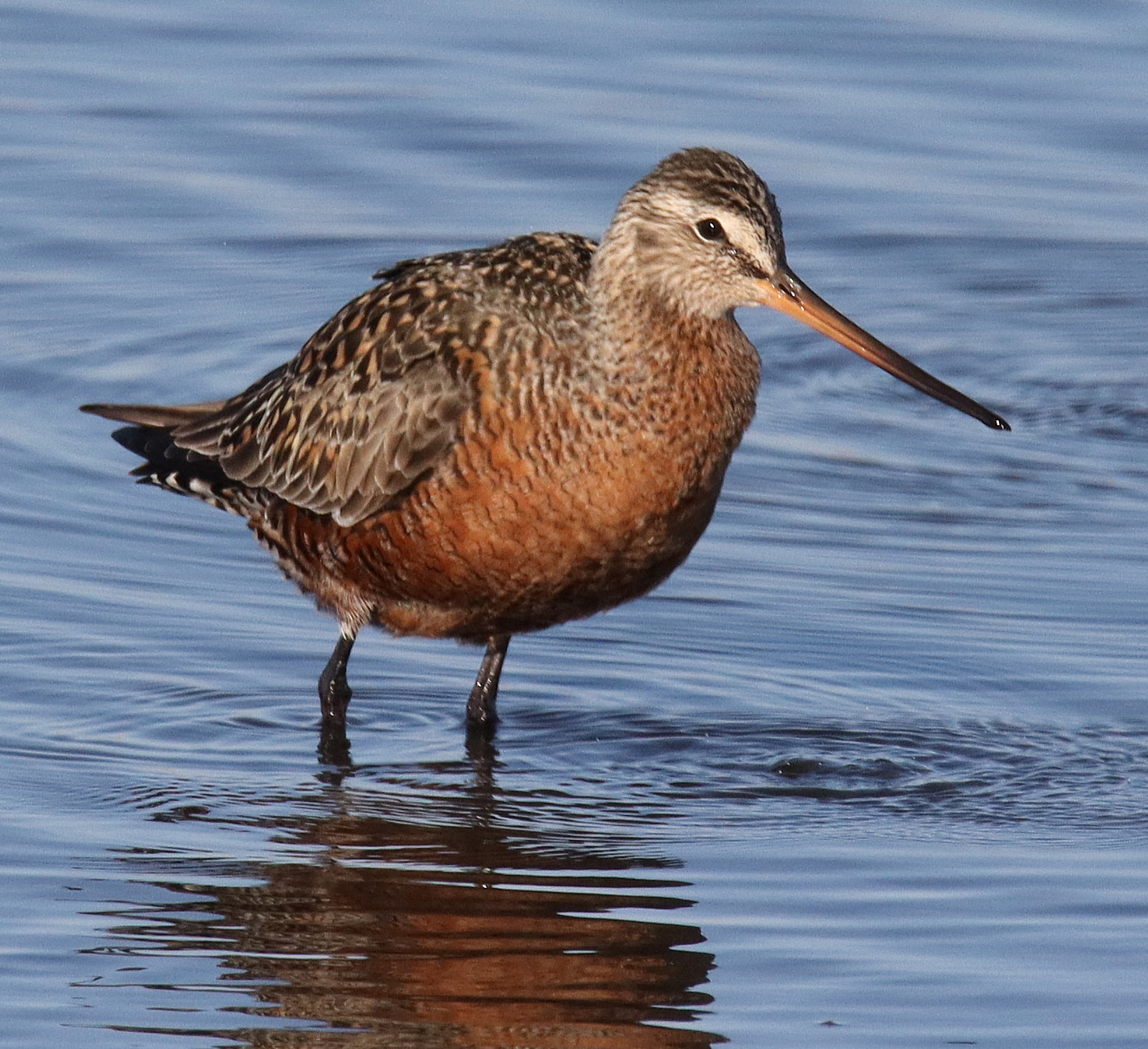
With calm water reflecting a beautiful shade of blue sky setting, a simple portrait of any bird would be attractive, but to photograph a rarely encountered Hudsonian Godwit in that setting provided the biggest thrill last week.
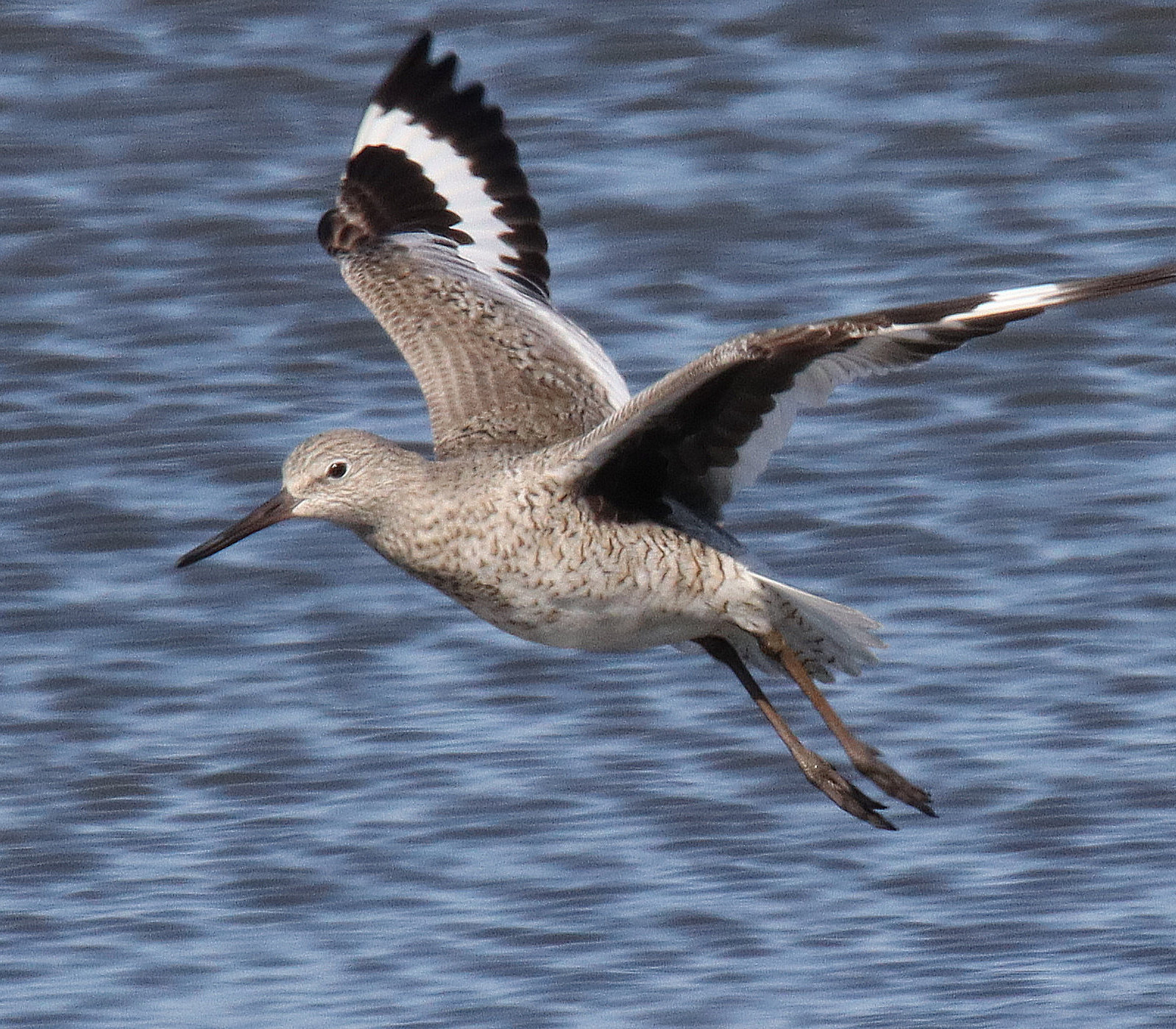
One of the first Willets of spring provided a flight photo at the godwit bay north of the office.
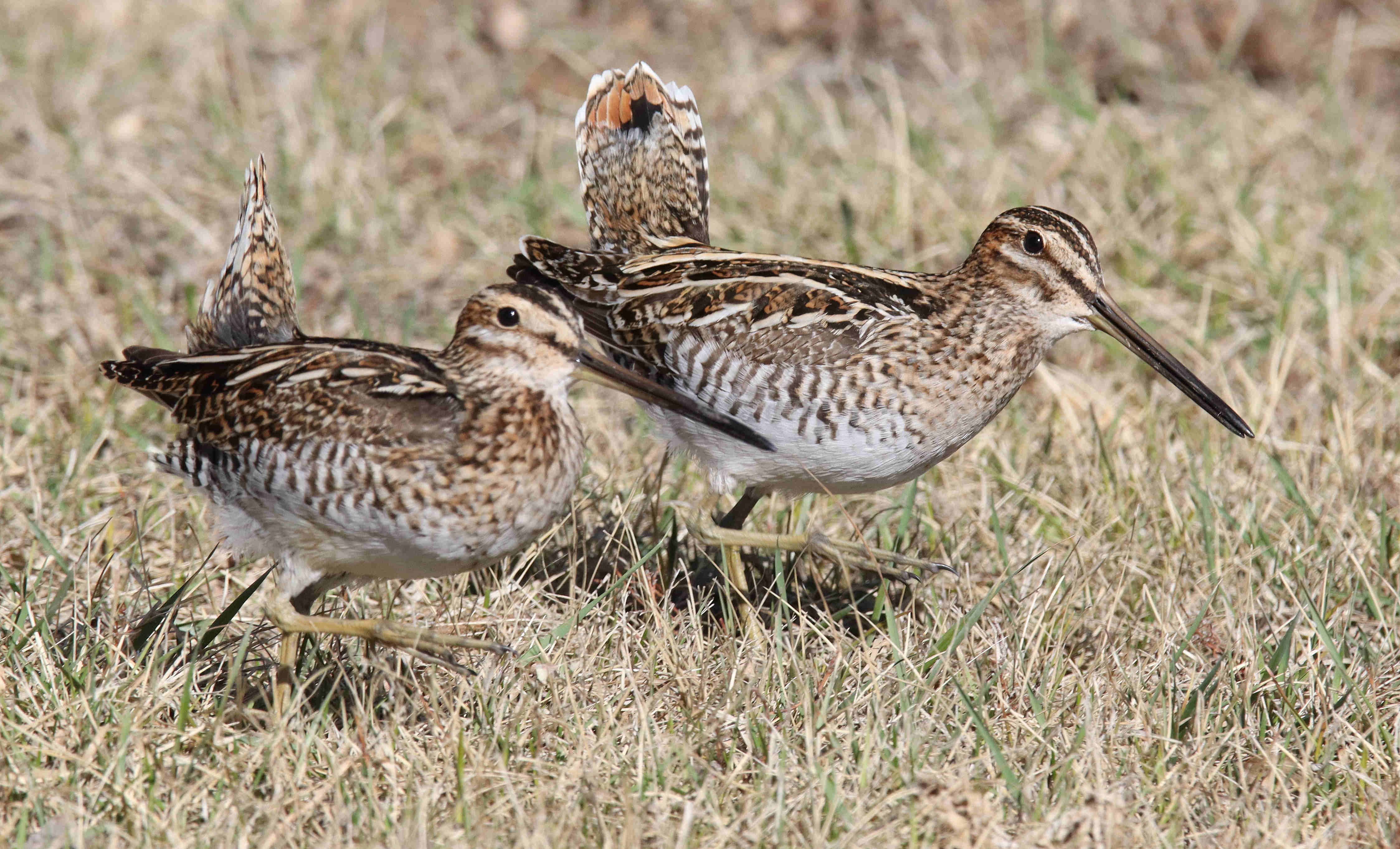
Leading me on a wild snipe chase near home, a pair of Wilson’s Snipe displayed and called on the run for a couple hundred yards, seemingly oblivious to the human with the black camera and lens following their activities.
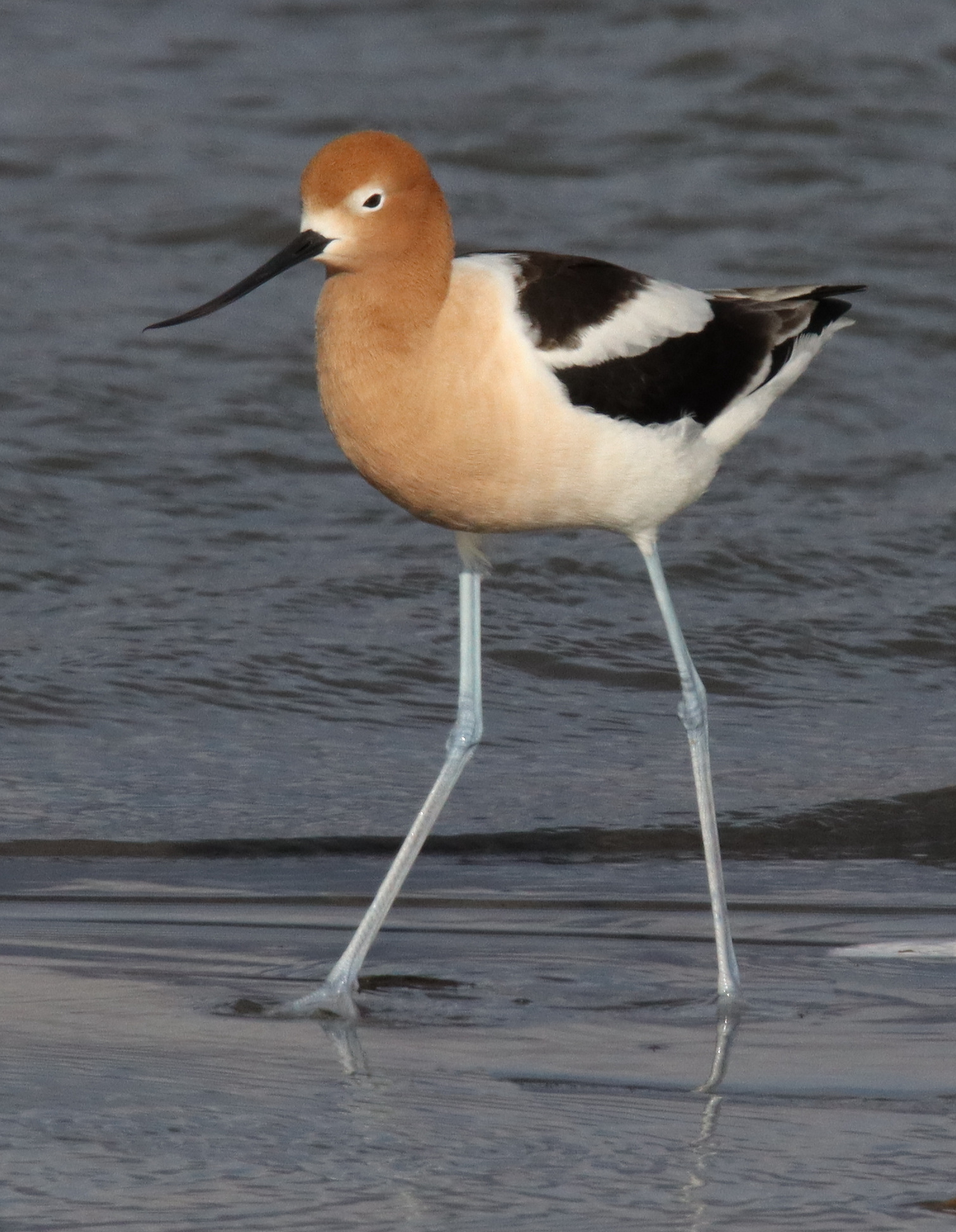
American Avocets arrived in full color in flocks and pairs, exhibiting a variety of behaviors from mating displays and copulations to social feeding, an occasional fight with a flurry of wing flapping, and occasional flights.
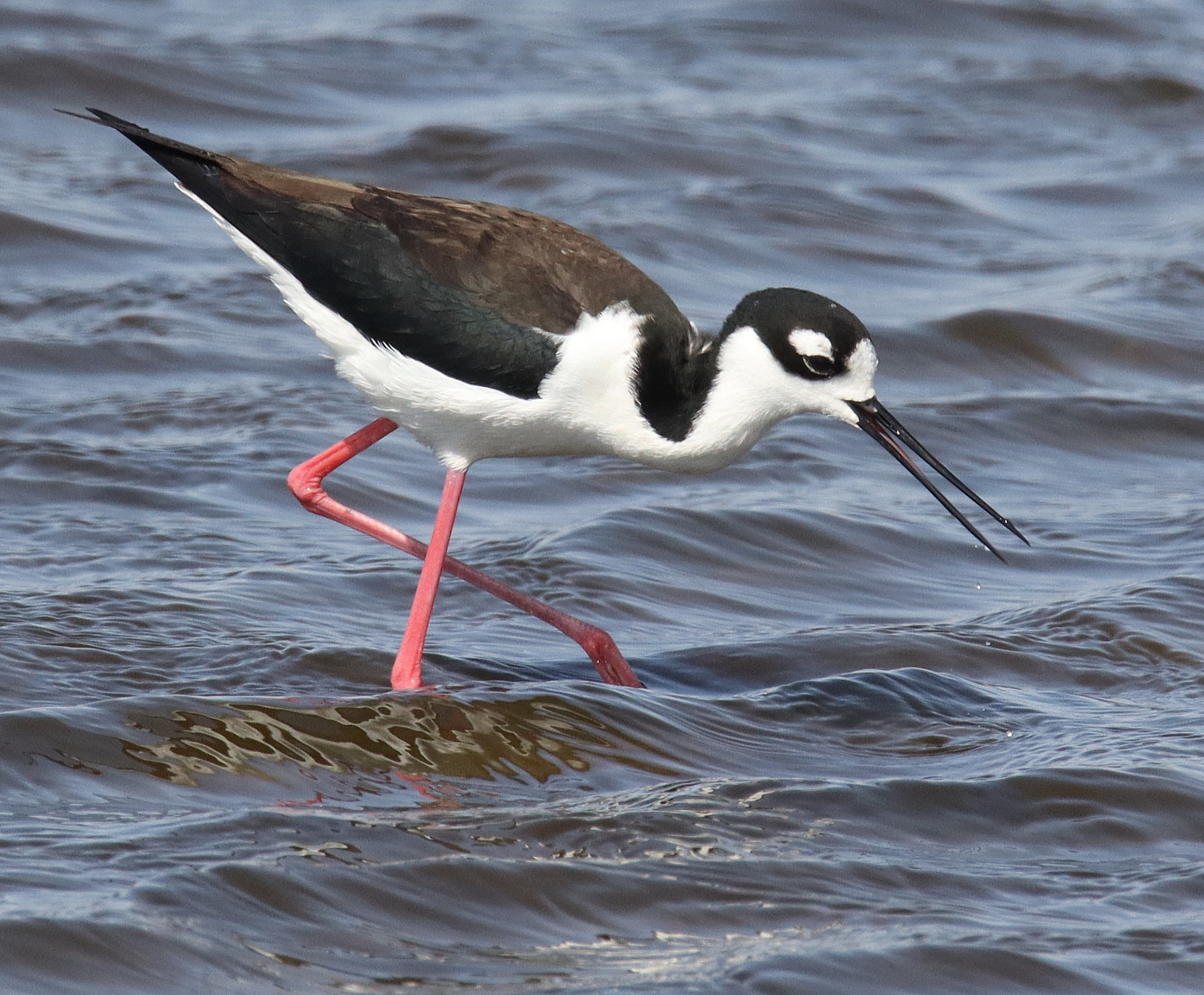
Exceptionally rare in the Northern Plains, Hecla Marsh is something of a local center for a small population of Black-necked Stilts. Part of a pair, a photo of the female is provided above, with the male pictured below.
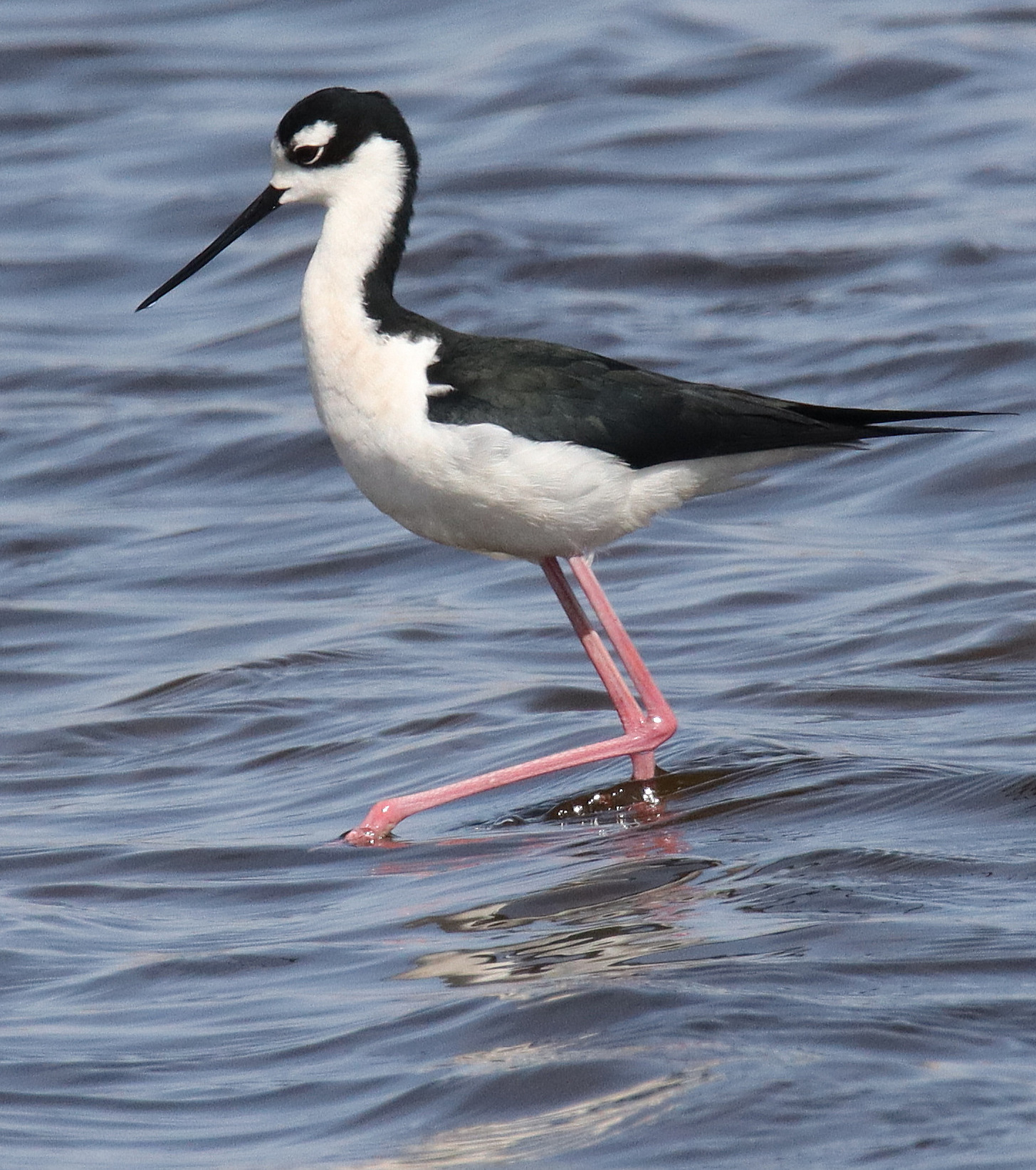
|
Two super birding days defined last week for me – an hours’ long adventure that covered more than 100 miles and produced new birds and many photo opportunities on Wednesday, and a memorable Saturday afternoon positioned adjacent to a shallow bay just 2 miles north of home. These were obviously very different outings, but both provided the kind of excitement that only time among birds will create. To start with, the local outing was produced and fueled by a rarely encountered species during a migration stop – a small flock of Hudsonian Godwits that was actively fueling up during a brief stopover on their way from coastal Argentina to the Canadian Arctic.
With an almost calm wind and glorious afternoon sunlight, I spent almost 3 hours photographing from my mobile blind (my car), during which I observed the avifauna before me as different species and individuals arrived and left, while others stayed, including the 6 Hudsonian Godwits Completely focused on feeding, the rare Hudsonians were males in nearly total alternate plumage. By 6pm the light breeze subsided and the color reflected in the water became more beautiful. That’s also when the godwits finally waded or flew to my side of the little bay, sometimes reaching the shallows within 60 feet of my camera lens.
Other shorebirds included 16 Marbled Godwits, 3 Willets, 20 American Avocets that occasionally fed as a single shoulder-to-shoulder flock, 18 Baird’s Sandpipers, a few Lesser Yellowlegs, fewer Greater Yellowlegs, and a few Killdeer including a mating pair. Other birds included 2 Bonaparte’s Gulls, 2 Ring-billed Gulls, Yellow-headed Blackbirds, Red-winged Blackbirds, Mallards, Northern Shovelers, Green-winged Teal, Blue-winged Teal, and Gadwalls, with brief fly-bys from a flock of about 40 Snow Geese, a flock of White-fronted Geese, a couple Double-crested Cormorant singles, and a Turkey Vulture. Of course, I photographed some of these birds when they presented themselves, while always keeping an eye on the Hudsonian Godwits.
Borderland Birding
Three days earlier I took advantage of a sunny but windy day to do what I suspected would be my last check on the Bald Eagle concentration, with the hope that more new birds arrived at Hecla Marsh and the borderland wetlands. Since counting a minimum of 618 Bald Eagles in that late spring concentration area March 26th, numbers diminished steadily and when I took the time to count during some of my subsequent visits to the area, I found 198, 144, an estimated half that number the next trip, and only saw 13 last Wednesday, April 16th. I was actually surprised the numbers stayed so high for so long, and I would have liked to have witnessed the buildup of eagles prior to finding them that exciting afternoon of March 26th.
Nonetheless, other birds were on hand to provide new spring sightings, including a few big flocks of White-faced Ibis, with a flock of more than 50 present and others numbering near 30; there were also 6 Tree Swallows checking out some cavities in a snag, and at the east side of Hecla Marsh was a pair of Black-necked Stilts foraging in the shallows. There were also more Great Blue Herons, Great Egrets, and Double-crested Cormorants at the nesting colony and the surrounding marshlands. And a conspicuous flock of 6 American Avocets that was soon joined by 9 more – 14 total. This Avocet flock provided some fun photo ops as the regal shorebirds in full color foraged shoulder to shoulder while swimming, and while wading. My photos showed some were catching tiny fish, although I would bet they were also catching and swallowing smaller invertebrates that I couldn’t detect.
The Black-necked Stilts also provided some nice photo opportunities, but they kept somewhat detached as they foraged in the shallows. Nearby, a couple pairs of Northern Shovelers were filtering tiny aquatic foods near the surface of the water, and I photographed them displaying between feeding bouts. There was one territorial scuffle between the pairs at what must have been a prime feeding spot, which precipitated more displaying. Many other ducks were present too, but still no Wood Ducks, and this marsh has better habitat than my local area for this species.
A slightly early first Swainson’s Hawk flashed northbound on my way home. I usually expect to see the first Swainson’s about April 20th, so this one was “slightly early” on April 16th. I would also see a pair resting in the midst of an historic Swainson’s nesting territory April 19th, and a single Swainson’s Hawk soaring in another occasional nesting territory Monday morning, April 21st, with many more to come.
New birds that appeared during the past week were the Swainson’s Hawks, Sandhill Cranes, Bonaparte’s Gulls, Franklin’s Gulls, Hudsonian Godwits, Marbled Godwits, Willets, a displaying pair of Wilson’s Snipe, Tree Swallows, and Common Terns (plus White-faced Ibis and Black-necked Stilts at Hecla Marsh). Other notable birds in the area include lingering Tundra Swans, occasional Bonaparte’s Gulls, late Snow Geese and White-fronted Geese, and I verified another incubating Red-tailed Hawk pair at a historic nest near my friend Herb’s ranch.
At home, I was surprised to see 2 Turkey Vultures teetering and circling just above the trees Wednesday, framed in flight outside my bay windows. A Brown Creeper also checked the bark on the elm tree for foods, adjacent to my feeding station. Thursday a pair of Mourning Doves was displaying, and Saturday the first female American Robin appeared. A Brown Creeper was present again Friday and Saturday, and I saw a Sharp-shinned Hawk zipping low between trees just 50 feet away Friday. One or more Blue Jays call almost daily, but I haven’t seen any for a while, and similarly, while in my yard I heard Sandhill Cranes flying directly overhead, but could not see them even though I could follow their calls as they advanced northward.
We had some technical difficulties with last week’s issue, and my Editor Afield article with photographs didn’t get published. That said, I wanted to share the photos and insights with you, so I’m going to try to publish it in this issue, following this article, and hope you like it.
Overall, this was an exciting week, especially due to the advent of new birds, observing mating behaviors, and having a chance to photograph rarely encountered Hudsonian Godwits in mating colors. By the way, the full story on the Hudsonians and more photographs are published in this week’s Bird Photography feature. I’m really thrilled with the quality of the images, so hope you check them out. Well, it’s the last week of April and new songbirds should be arriving in yards, fields, woodlands, and wetlands across North America, so may the parade of warblers, vireos, orioles, tanagers, thrushes, and native sparrows, plus flycatchers, swallows, and more thrill you in the weeks to come, and maybe tomorrow too – Good Luck!
Article and Photos by Paul Konrad
Share your bird sightings and photographs at editorstbw2@gmail.com